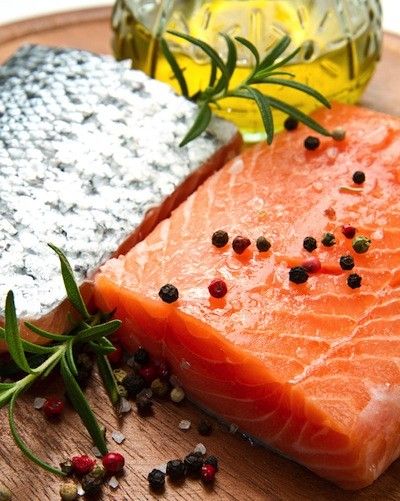
Not all fat is bad. Don’t believe us? Keep reading and you’ll be saying the same thing by the end of this article. The four different types of fat are trans, saturated, polyunsaturated, and monounsaturated. Fat is actually a very essential part of the body that helps us with basic functions in our everyday routines. Saturated fats are solid at room temperature, like butter or coconut oil. Unsaturated fat (polyunsaturated and monounsaturated) is a fluid at room temperature, like olive oil and canola oil. If you have ever looked at a nutrition label on any packaged item you will usually see listed under the category “Fats,” the four subgroups named above (trans, sat, poly, & mono). So which types are better than others? The answer is the unsaturated fats.
Polyunsaturated Fats
Polyunsaturated fats which contain omega-3s are found in products like soybean oil, canola oil, walnuts, flaxseed, and fish (more particularly salmon, trout, & herring). According to the American Heart Association, polyunsaturated fats can have a beneficial effect on your heart when eaten in moderation. Especially if used to replace saturated and trans fat in your diet. Polyunsaturated fats also help to lower your LDL levels (bad cholesterol) which may decrease your chances of stroke or heart attack.
Oils rich in polyunsaturated fats such as soybean and canola oil also help to provide the body with the essential fats it cannot produce on its own (omega 3 and 6). According to Harvard Health Publications, polyunsaturated fats also help to build cell membranes and the sheathing around nerves in the body. This healthy fat also is important to protect against blood clotting, muscle contraction, relaxation, and inflammation.
Monounsaturated Fats
Monounsaturated fats are found in food items such as avocados, nuts, vegetable oil, olive oil, safflower oil, and sunflower oil. Like polyunsaturated fats, monounsaturated fats can also have beneficial effects on your heart when eaten in moderation to replace saturated fats in the diet. Monounsaturated fats also increase your HDL levels (good cholesterol). Another major benefit that this particular fat has is that it keeps you feeling fuller longer after eating.
Saturated Fats
According to the majority of studies and research most people would say that saturated fat is bad fat. It’s true that poly and monounsaturated fats are better for you, but the body does need saturated fat as well in moderation to run to its full ability. The Dietary Guidelines for Americans in 2010 for recommendation of saturated fat was to consume less than 10% of your daily calories as saturated fat.
Saturated fats are commonly found in high-fat cheese, high-fat cuts of meat, whole-fat milk and cream, butter, ice cream, and palm and coconut oils. Lower fat versions of these foods are sometimes available and just contain a smaller amount of saturated fats. Animal fats are the main sources of saturated fats followed by plant oils like palm or coconut oil. These oils are usually one of the ingredients in cookies, cakes, pie, etc…
According to the Center of Disease Control and Prevention if you’re looking to cut back on saturated fats there are a few quick and easy things you can change. You may choose leaner cuts of meat with less marbled fat appearance. You may also drink low fat milk such as 1%, skim, or non-dairy. As stated above, some saturated fat is needed in the everyday diet. Saturated fat ensures proper absorption of fat-soluble vitamins and minerals. It also helps with satiety signals, and aids in hormone production and energy storage.
Trans Fats
Trans fat on the other hand, has close to no nutritional value to our bodies at all. According to the CDC (Center for Disease Control and Prevention), “Consuming trans-fat increases LDL (bad) cholesterol. This risk factor contributes to the leading cause of death in the U.S- coronary heart disease.” Trans fat is artificial and its main purpose is for food manufactures to use as an inexpensive way to increase an item’s shelf life and stability at the store.
So remember that not all fats are bad. When grocery shopping or deciding what to eat as your next meal choose the unsaturated fat items such as avocado, salmon, items made with olive oil, and nuts. Also choose lower fat cuts of meat like chicken breast, fish, and lean ground beef. It’s inevitable that we all have the days where we want the piece of chocolate cake for dessert or the glazed doughnut in the morning, so have it! Moderation and choosing healthier items are key.
References
(2014). Polyunsaturated Fats. American Heart Association
(2014). The truth about fats: bad and good. The Harvard Medical School Family Health Guide
(2014). Trans Fat, Saturated Fats, Polyunsaturated and Monounsaturated Fats. Centers for Disease Control and Prevention







